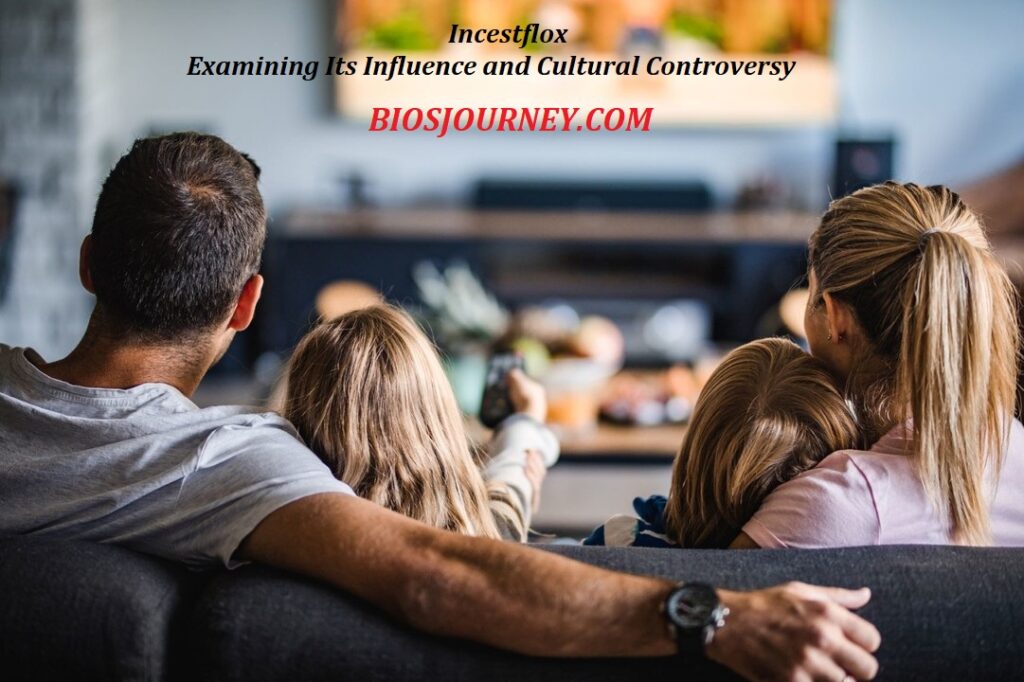The term “Incestflox” has gradually emerged within various online forums and communities, gaining traction as its significance becomes more apparent in today’s digital landscape. To comprehend its implications for society, we need to explore its origins, cultural relevance, and broader societal effects.
Let’s dive into what Incestflox signifies, its relevance, and its evolution over time.
Table of Contents
- What is Incestflox?
- The Rise of Incestflox in Online Spaces
- Media Sensationalism and Public Awareness
- Artistic and Literary Interpretations
- Cultural Consequences and Ongoing Debates
- The Role of Social Media in Shaping Opinions
- Ethical Challenges and Content Oversight
- Promoting Education and Understanding
- Prevention Through Open Dialogue and Support
- Moving Forward with Compassion and Accountability
- Conclusion
- FAQs
What is Incestflox?
Incestflox is a term that has emerged predominantly in niche online communities where discussions about taboo or controversial subjects take place. Initially perceived as a fringe topic, its visibility has increased due to its representation in various media formats, including blogs, forums, and social networks. Although the term might not be familiar to everyone, its themes often touch on sensitive discussions surrounding the portrayal of prohibited relationships in literature and media.
Please visit our other article: https://biosjourney.com/health/harriet-goldfischer-providence-health/
The Rise of Incestflox in Online Spaces
The concept of Incestflox began appearing more prominently in the early 2000s within specific digital circles. Initially associated with controversial discussions that were largely avoided in mainstream dialogue, it found a niche audience as internet communication broadened. These online platforms created a space for individuals to express and explore ideas that might otherwise be stigmatized.
Media Sensationalism and Public Awareness
The rise of Incestflox wasn’t purely organic; it was significantly influenced by sensationalist media coverage. In our digital age, topics that shock or provoke intrigue often capture public attention, even when misrepresented. As news outlets began to cover such themes, Incestflox gained visibility, creating a ripple effect that brought the term into public consciousness.
However, this surge in exposure also ignited controversy, as discussions surrounding the term often sparked debates about its implications.
Artistic and Literary Interpretations
Incestflox has also made its way into artistic and literary discussions. Creators frequently use taboo themes to delve into complex emotional narratives, with Incestflox serving as a subject in this exploration. While some laud these portrayals as a means to challenge societal norms, others caution that they may inadvertently normalize harmful behaviors. This ongoing tension between artistic freedom and social responsibility remains a vital aspect of the conversation.
Cultural Consequences and Ongoing Debates
A significant shift in the public’s perception of Incestflox revolves around its representation in media and culture. Debates often center on whether such portrayals are meant to provoke thoughtful discussion or if they risk endorsing dangerous behaviors.
Critics contend that any representation of Incestflox may legitimize harmful actions, particularly among vulnerable audiences. Conversely, supporters argue for the importance of creative expression, advocating that even the most difficult topics deserve exploration without being seen as endorsements of those behaviors.
The Role of Social Media in Shaping Opinions
In an interconnected world, social media plays a pivotal role in molding public perceptions. For Incestflox, this has been a double-edged sword. On one hand, social media platforms facilitate open, inclusive discussions, leading to advocacy and increased awareness about the potential dangers of taboo subjects. On the other, they can spread misinformation, allowing misconceptions to proliferate without context.
Ethical Challenges and Content Oversight
As the dialogue around Incestflox intensifies, ethical concerns regarding content dissemination have arisen. While freedom of expression is vital in contemporary society, it often conflicts with the need to protect individuals from harmful exposure. Content moderation is a contentious issue, as platforms strive to balance open discussions with the need to restrict content that could lead to harmful behaviors.
Some advocate for stricter regulations concerning the portrayal of sensitive topics like Incestflox to mitigate potential harm, while others warn that overregulation may stifle creativity and dialogue.
Promoting Education and Understanding
Addressing the concerns linked to Incestflox necessitates a proactive approach, with education at its core. It’s essential for schools, parents, and community organizations to collaborate in promoting healthy discussions about relationships, boundaries, and consent. By fostering an atmosphere of open dialogue, individuals can better navigate complex issues surrounding such topics.
Increasing awareness about terms like Incestflox and their implications can also prevent harmful behaviors from taking root, enabling communities to engage in informed and responsible conversations.
Prevention Through Open Dialogue and Support
Preventing harmful behaviors often starts with awareness and communication. Collaboration among schools, parents, and social organizations is vital to create spaces for honest discussions. By encouraging conversations about consent, respect, and emotional health, individuals can better recognize the risks associated with topics like Incestflox.
Additionally, establishing support systems through online communities and mental health resources can help those grappling with these issues feel less isolated.
Moving Forward with Compassion and Accountability
As conversations surrounding taboo topics become increasingly common, it’s crucial to approach these discussions with empathy and responsibility. The complexities surrounding Incestflox demand not only awareness but also concrete actions to prevent harm. Together, we can cultivate a more informed and compassionate society.
FAQs
Q: What is Incestflox?
Incestflox refers to a term emerging in online discourse, often linked to sensitive and controversial topics surrounding relationships.
Q: Why has Incestflox gained popularity?
The term’s rise is attributed to sensationalist media coverage and discussions within niche online communities.
Q: Is Incestflox harmful?
While the term itself may not be inherently harmful, its representations can be controversial and may risk endorsing dangerous behaviors if not approached carefully.
Q: How can we prevent harmful behaviors associated with Incestflox?
Education, open dialogue, and increased awareness are vital to preventing behaviors linked to such sensitive topics.
Q: What role does social media play in the visibility of Incestflox?
Social media platforms have amplified both the visibility of Incestflox and misunderstandings regarding its nature, contributing to both positive and negative discourse.
Conclusion
In summary, Incestflox has emerged in specific online realms, gaining visibility while presenting both ethical challenges and societal responsibilities. Its representation in media, art, and literature continues to ignite debates about creative freedom and the risks of normalizing taboo subjects. As we navigate the implications of Incestflox, fostering open discussions, promoting education, and encouraging healthy relationships will be essential in minimizing harm.



